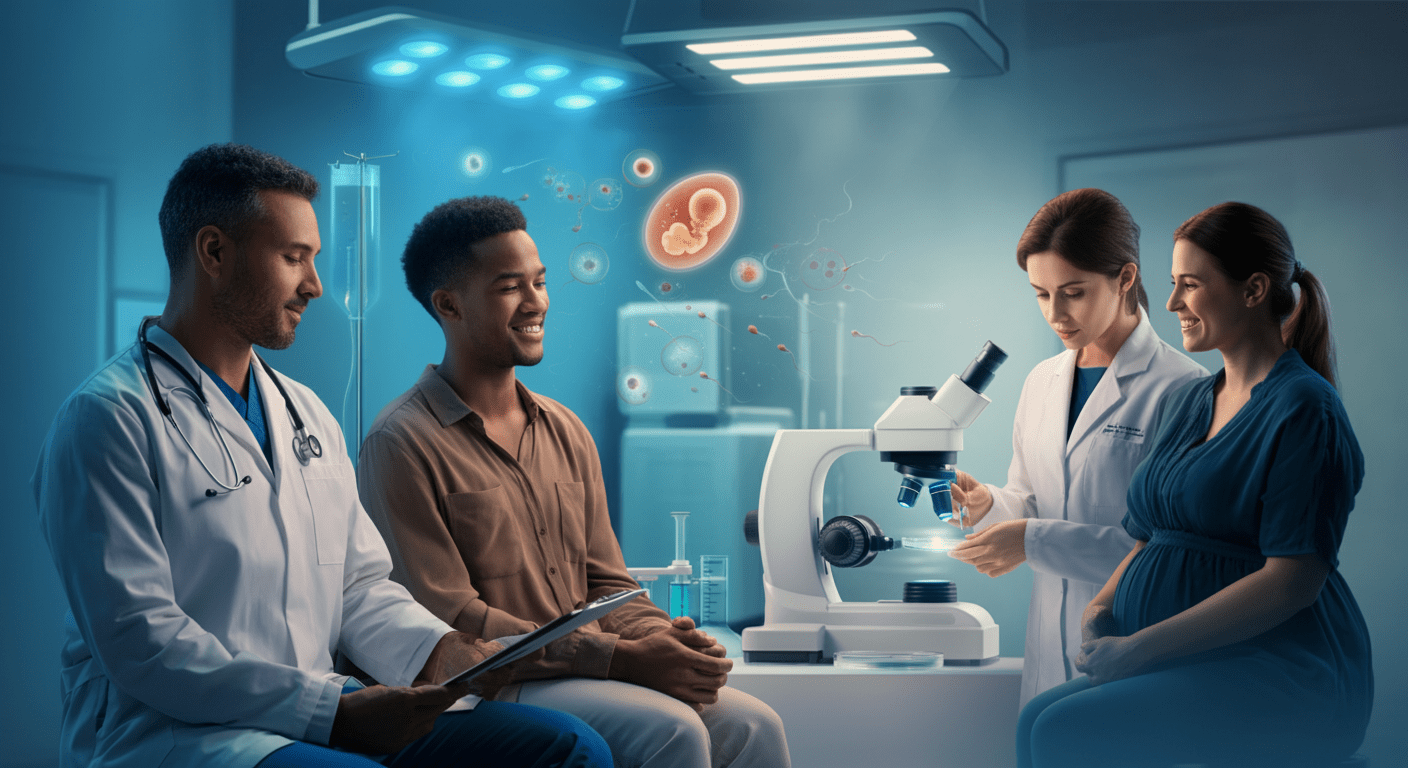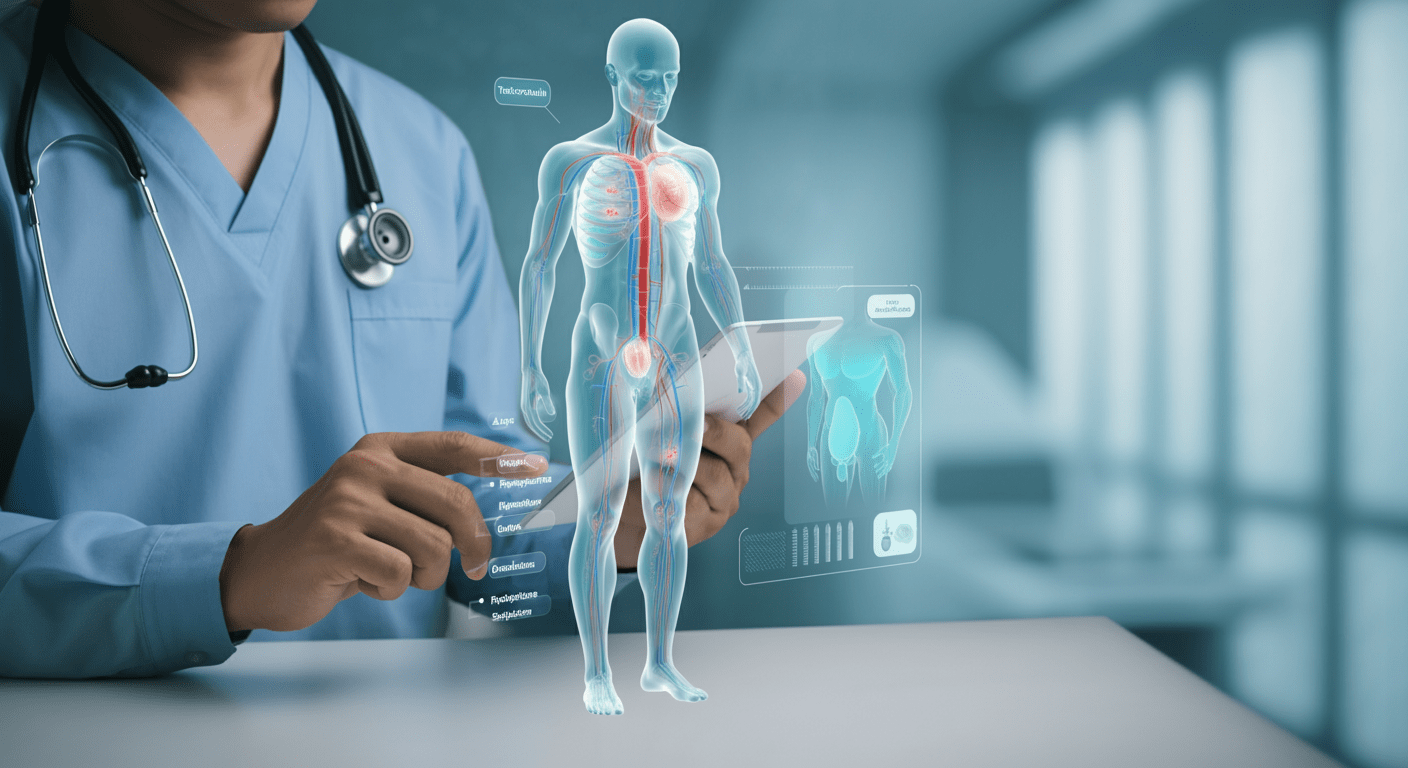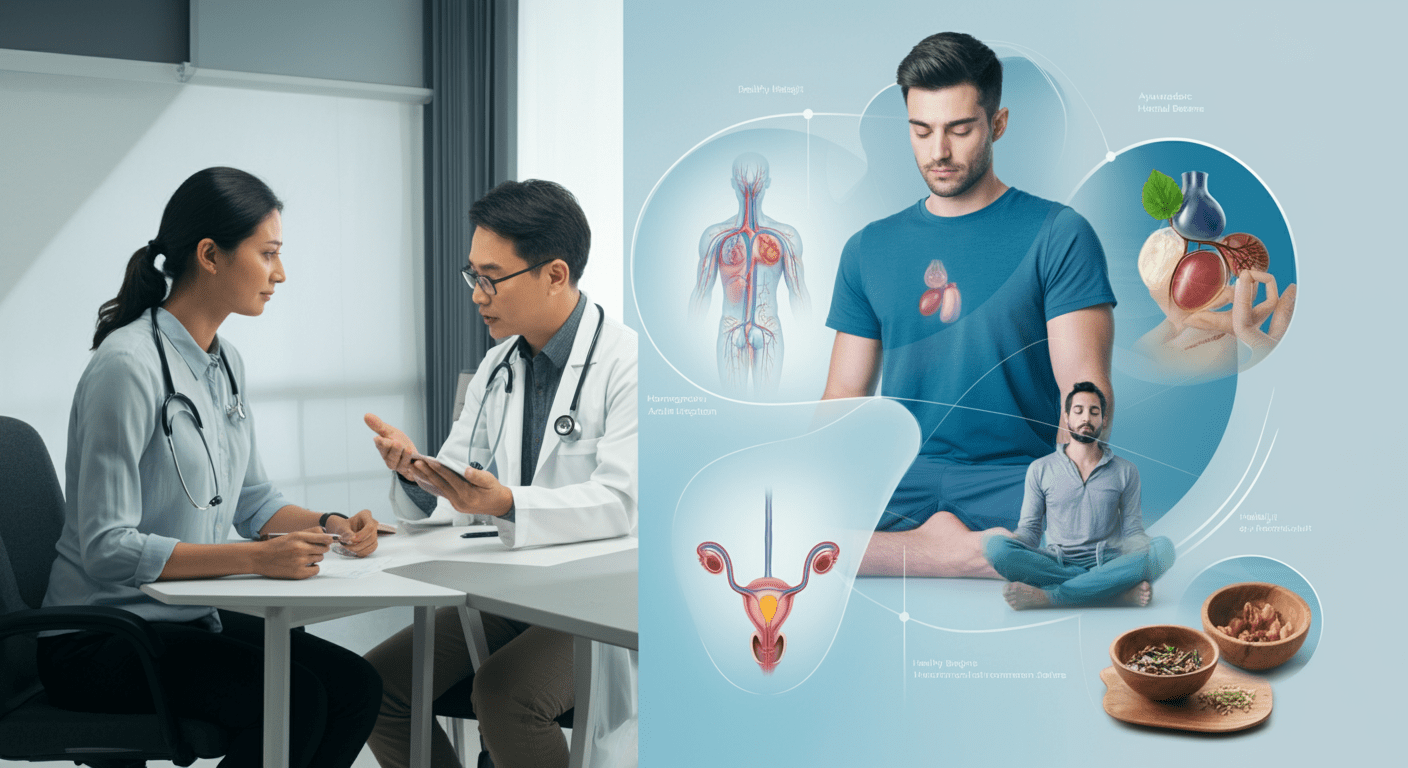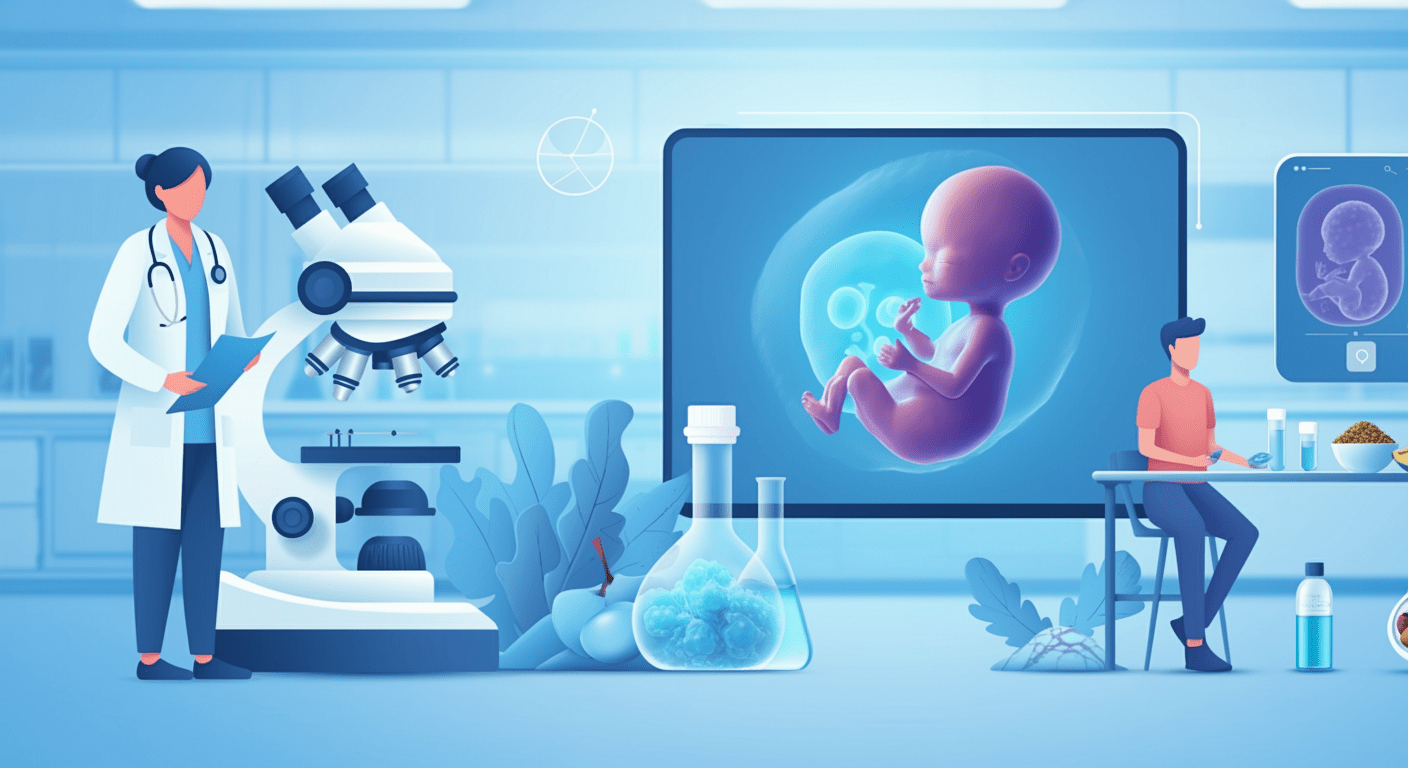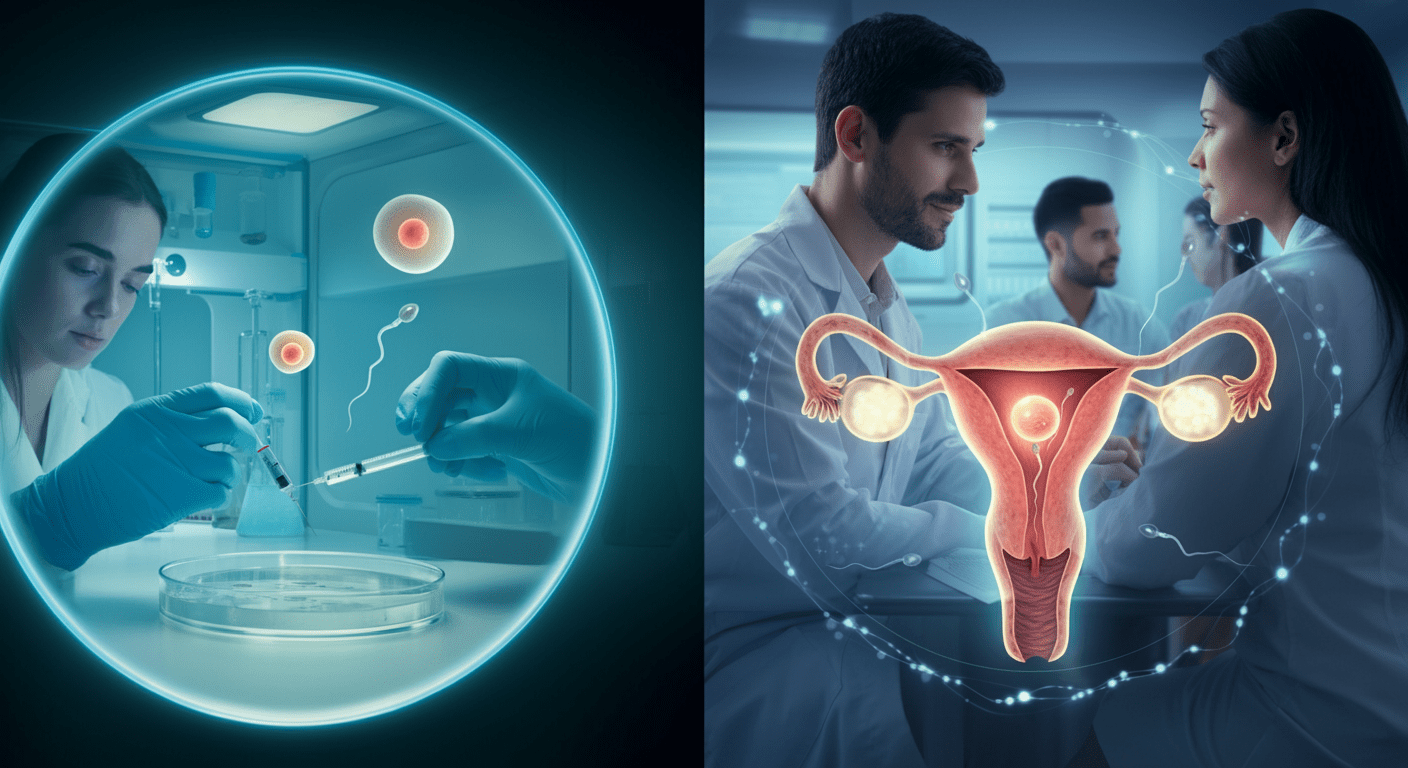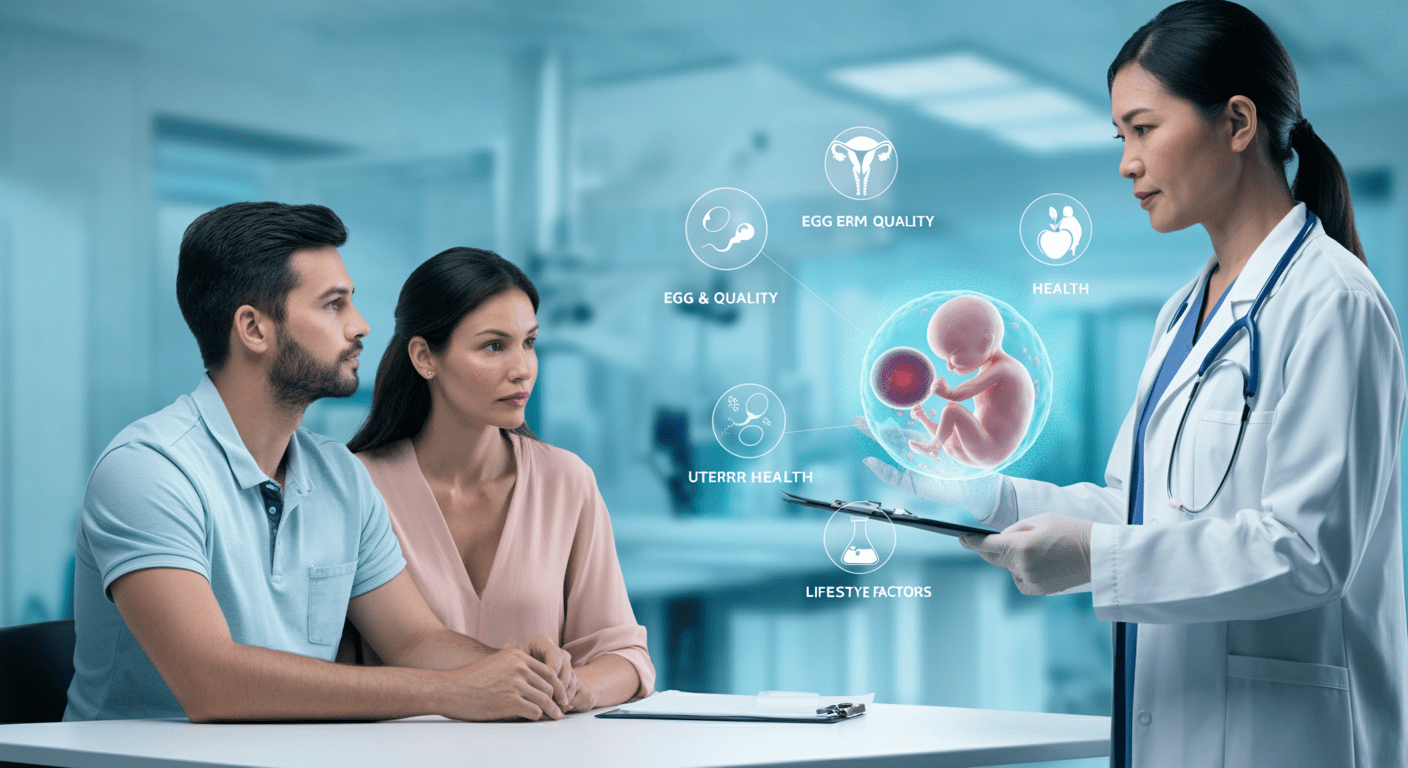For many couples facing infertility, in vitro fertilization (IVF) offers a promising solution to conceive. The Complete IVF Process: Step-by-Step Guide for First-Time Parents aims to provide a clear and detailed explanation of the IVF journey, breaking down each step in an easy-to-understand manner.
As a first-time parent, understanding the IVF process can help alleviate stress and prepare you for what lies ahead. This guide covers everything from initial consultations to embryo transfer, including important medical procedures, timelines, and success factors.
Step 1: Initial Consultation and Fertility Assessment
The first step in The Complete IVF Process: Step-by-Step Guide for First-Time Parents is an initial consultation with a fertility specialist. The doctor will review the couple’s medical history, lifestyle factors, and any previous fertility treatments.
Tests and Evaluations Conducted
Both partners undergo several tests to determine the best course of action for IVF:
| Test | Purpose |
|---|---|
| Hormonal Blood Tests | To check ovarian reserve, thyroid function, and reproductive hormone levels |
| Semen Analysis | To assess sperm count, motility, and morphology |
| Pelvic Ultrasound | To evaluate the ovaries, uterus, and follicular count |
| Hysteroscopy/Laparoscopy (if needed) | To diagnose uterine abnormalities like fibroids or endometriosis |
These tests help the fertility team design a personalized IVF treatment plan to maximize the chances of success.
Step 2: Ovarian Stimulation
Since a natural menstrual cycle produces only one mature egg per month, IVF requires multiple eggs for a higher chance of fertilization. Fertility medications stimulate the ovaries to produce multiple eggs.
Ovarian Stimulation Process
- Daily hormone injections (for 8–14 days) to stimulate follicle growth
- Regular blood tests and ultrasound scans to monitor follicular development
- Adjusting medication dosage based on follicle response to avoid complications
The goal is to retrieve multiple high-quality eggs while minimizing the risk of ovarian hyperstimulation syndrome (OHSS), a condition where the ovaries become overly enlarged due to excessive response to medications.
Step 3: Final Maturation and Egg Retrieval
When the follicles reach an optimal size (18-22 mm), a trigger shot is administered to induce final egg maturation.
Egg Retrieval Procedure
- Conducted 34 to 36 hours after the trigger shot
- A minor surgical procedure performed under light sedation
- A thin needle is inserted through the vaginal wall to aspirate eggs from the ovaries
- The procedure lasts 20 to 40 minutes, with mild cramping expected afterward
The retrieved eggs are immediately handed over to the embryology laboratory for assessment and fertilization.
Step 4: Sperm Collection and Preparation
On the same day as egg retrieval, the male partner provides a sperm sample through masturbation or surgical sperm extraction (in severe male infertility cases). The sperm is washed and processed to select the healthiest, most motile sperm for fertilization.
| Sperm Retrieval Method | When It Is Used |
|---|---|
| Natural Ejaculation | Most common method |
| Testicular Sperm Extraction (TESE) | Used in men with low sperm production |
| Micro-TESE | A surgical sperm retrieval method for men with azoospermia |
Step 5: Fertilization of Eggs and Embryo Development
Once the eggs and sperm are prepared, fertilization takes place in the laboratory.
Methods of Fertilization
- Conventional Insemination: Eggs and sperm are placed together in a petri dish to fertilize naturally
- Intracytoplasmic Sperm Injection (ICSI): A single sperm is injected directly into an egg (used in cases of male infertility)
After fertilization, the embryos develop for 3 to 5 days under controlled lab conditions.
| Embryo Development Timeline | Stage |
|---|---|
| Day 1 | Fertilization occurs |
| Day 3 | Embryo reaches 6-8 cell stage |
| Day 5-6 | Embryo reaches blastocyst stage (best for transfer) |
Some couples may choose Preimplantation Genetic Testing (PGT) to screen embryos for genetic abnormalities before transfer.
Step 6: Embryo Transfer
The Embryo Transfer Procedure
- Takes place 3 to 5 days after fertilization
- A thin catheter is used to place the embryo into the uterus
- The procedure is painless and requires no anesthesia
- After the transfer, patients rest briefly before resuming normal activities
Doctors may recommend transferring one or more embryos based on maternal age, embryo quality, and previous IVF cycles.
| Embryo Transfer Strategy | Who It’s Recommended For |
|---|---|
| Single Embryo Transfer (SET) | Younger women, first IVF attempt, high-quality embryos |
| Multiple Embryo Transfer | Older women, previous IVF failures, poor embryo quality |
Step 7: The Two-Week Wait and Pregnancy Test
After the embryo transfer, patients must wait 12-14 days before taking a beta hCG blood test to confirm pregnancy.
What to Expect During the Two-Week Wait
- Mild cramping or spotting (normal signs)
- Emotional ups and downs due to hormonal changes
- Patients should avoid strenuous activity, smoking, and alcohol
A positive pregnancy test means the embryo has successfully implanted in the uterus. If negative, the fertility team will discuss next steps, including another IVF cycle or frozen embryo transfer (FET).
Success Rates and Factors Affecting IVF Outcomes
The success of IVF depends on multiple factors, including:
| Factor | Impact on IVF Success |
|---|---|
| Age of the Woman | Younger women have higher success rates |
| Embryo Quality | High-quality embryos have better implantation chances |
| Uterine Health | A receptive uterus supports implantation |
| Lifestyle Factors | Smoking, alcohol, and stress reduce success rates |
The average success rate of IVF is 40-50% per cycle for women under 35 but decreases with age.
Final Thoughts: Is IVF Right for You?
The Complete IVF Process: Step-by-Step Guide for First-Time Parents provides insight into each phase of IVF, making the journey less overwhelming and more manageable. Understanding the process, potential challenges, and success factors helps couples prepare both emotionally and physically.
If you’re considering IVF, consult a fertility specialist to assess your unique reproductive health and explore the best treatment options for a successful pregnancy. With the right approach, IVF can be a life-changing opportunity to achieve parenthood.
FAQs: The Complete IVF Process: Step-by-Step Guide for First-Time Parents
1. How long does the complete IVF process take from start to finish?
The full IVF cycle typically takes between 4 to 6 weeks, but the timeline can vary depending on individual circumstances. The process starts with pre-cycle evaluations, followed by ovarian stimulation, egg retrieval, fertilization, and embryo transfer. After the transfer, there is a two-week wait before a pregnancy test.
If additional procedures like preimplantation genetic testing (PGT) or a Frozen Embryo Transfer (FET) are included, the process may take longer. Some couples require multiple cycles before achieving a successful pregnancy, which can extend the overall timeline.
2. Is IVF painful? What should I expect in terms of discomfort?
IVF is not typically painful, but some steps may cause mild discomfort. Hormonal injections used for ovarian stimulation can cause bloating, tenderness, or mild bruising at the injection site. Egg retrieval is performed under anesthesia or sedation, so patients do not feel pain during the procedure, but mild cramping or bloating may occur afterward.
Embryo transfer is usually painless and feels similar to a routine Pap smear. Some women may experience mild cramping after the transfer, but it subsides quickly. The emotional stress of waiting for results may be more challenging than the physical discomfort.
3. What are the success rates of IVF, and what factors influence the outcome?
The success of IVF depends on several factors, with age being the most significant predictor. Women under 35 years old have a higher chance of success per cycle, while success rates decline with age. Other factors include embryo quality, uterine health, lifestyle choices, and the presence of underlying fertility issues.
Success rates also vary depending on whether fresh or frozen embryos are used. Advances in assisted reproductive technology (ART), such as preimplantation genetic testing (PGT), can improve outcomes by selecting genetically healthy embryos for transfer.
4. How many embryos should be transferred? Is it safe to transfer multiple embryos?
The number of embryos transferred depends on several factors, including maternal age, embryo quality, and previous IVF history. In many cases, doctors recommend transferring a single embryo (SET) to reduce the risk of multiple pregnancies, which can lead to complications like premature birth and low birth weight.
For women over 35 years old, or those with a history of failed IVF cycles, doctors may transfer two embryos to improve the chances of implantation. However, transferring multiple embryos increases the likelihood of twins or triplets, which may pose risks to both the mother and babies.
5. What lifestyle changes should I make before and during IVF treatment?
Making healthy lifestyle choices before and during IVF can significantly impact success rates. Maintaining a healthy weight is crucial, as both underweight and overweight women may have hormonal imbalances that affect egg quality and implantation.
A balanced diet rich in proteins, vitamins, and antioxidants supports reproductive health. Reducing caffeine intake, avoiding alcohol, and quitting smoking are essential steps, as these factors can negatively affect egg and sperm quality. Managing stress through yoga, meditation, or counseling is also recommended, as emotional well-being plays a crucial role in fertility.
During IVF, it is advisable to avoid strenuous exercise but continue light physical activity such as walking or prenatal yoga to maintain blood circulation.
6. What are the risks or side effects of IVF?
IVF is generally safe, but like any medical procedure, it carries some risks. The most common side effect is ovarian hyperstimulation syndrome (OHSS), which occurs when the ovaries respond too aggressively to fertility medications. Symptoms include bloating, nausea, abdominal pain, and fluid retention.
There is also a small risk of ectopic pregnancy, where the embryo implants outside the uterus, requiring medical intervention. Multiple pregnancies, though less common with modern IVF protocols, can lead to complications such as preterm birth and gestational diabetes.
Some women experience emotional stress and anxiety during IVF, making it essential to seek support from partners, friends, family, or professional counseling if needed.
7. What happens if my first IVF cycle fails? Can I try again?
A failed IVF cycle can be discouraging, but it does not mean the end of your journey. Many couples require more than one cycle to achieve pregnancy. If IVF fails, the fertility doctor will review the cycle to identify potential reasons, such as poor embryo quality, implantation failure, or underlying uterine conditions.
Options after a failed IVF cycle include:
Frozen Embryo Transfer (FET): If high-quality embryos were frozen, they can be used in a future cycle without repeating ovarian stimulation and egg retrieval.
Lifestyle Modifications: Adjusting diet, stress management, and hormonal support can improve outcomes.
Preimplantation Genetic Testing (PGT): If embryo quality is a concern, genetic screening can help select the best embryos for future transfers.
Alternative Treatments: In some cases, the doctor may recommend using donor eggs or sperm or considering gestational surrogacy if carrying a pregnancy is not possible.
The decision to continue IVF depends on personal, medical, and financial considerations. Fertility specialists often recommend a break between cycles to allow the body to recover before trying again.
